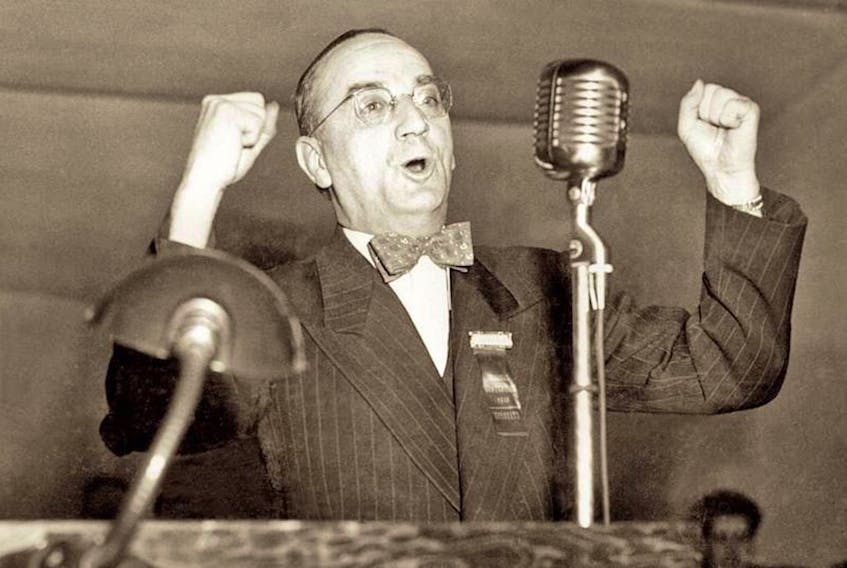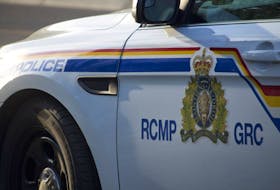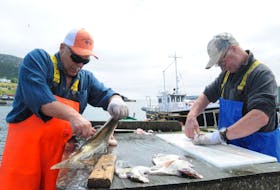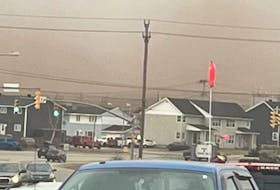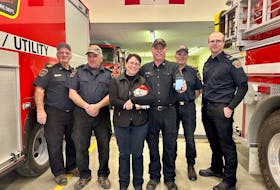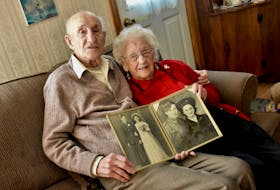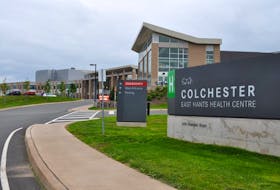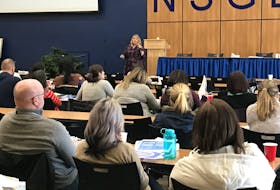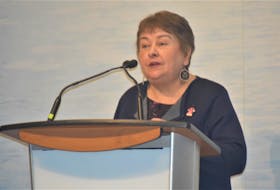ST. JOHN'S, N.L. — Unprecedented.
It may be the adjective most used to describe the 2021 Newfoundland and Labrador general election, both for the way the election process unfolded and for the pandemic-influenced times in which that process was conducted.
It’s an adjective that will also apply to the results, which were announced — albeit with an “unofficial” qualifier — by Elections Newfoundland and Labrador on Saturday.
Related
- EDITORIAL: For Newfoundland and Labrador, it was an odd job of an election
- Crosbie's future is in question after what was a double loss in Newfoundland and Labrador election
- NL Alliance leader disappointed to see majority win for Newfoundland and Labrador Liberals
- Liberals, Furey win a majority government in Newfoundland and Labrador
- NDP Leader delivers impassioned speech on ‘historic’ Newfoundland and Labrador election
There were 178,542 votes cast in the election, and while that is not the lowest total in provincial history, it is the lowest in more than half a century. And it does represent the lowest percentage of ballots cast by eligible voters since Newfoundland’s 1949 confederation with Canada gave it provincial status.
According to Elections NL, there were 372,037 eligible voters, so the numbers revealed Saturday mean just less than 48 per cent of them cast ballots.
You might say it can’t accurately be described as low turnout, since most people didn’t actually turn out or turn up to vote — at least in a physical sense. Other than those cast in advance polls prior to the province being placed in a Level 5 lockdown in February, all votes were by special mail-in ballot. But whatever the description, it resulted in the lowest-ever participation rate. The previous low came in 2015, when 200,831 of 363,207 — or just over 55 per cent — eligible voters cast ballots.
Editor's Note: Results are not official until Tuesday, March. 30, 2021.
For the record, the fewest-ever number of actual participating voters came in 1962, when Joey Smallwood’s Liberals won 35 of 38 available seats. They did so in an election that saw just 123,990 votes cast. But since there were 211,921 people eligible to vote, it still meant an almost 60 per cent participation rate.
The number of votes cast in the 1966 election rose to almost 150,000, but five years later — after the 1970 voting-age reduction from 21 to 18 and Smallwood facing serious challenges from within and outside the Liberal party — there were 233,573 votes cast, which was a whopping 88 per cent of eligible voters.
To put it in context, that’s 40 percentage points higher than this latest election.
The next couple of decades — as more and more baby boomers became eligible to exercise their democratic right — saw both an increase in eligible voters and those casting ballots, reaching a zenith in 1993, when 302,631 of the 361,912 who were deemed able to vote (or just under 84 per cent), dropped a slip of paper into a box, leading to a result that gave the Liberals’ Clyde Wells a second term in office.
Since then, there has been a fairly steady erosion in ballot numbers, so much so that in 2015 there were more than 100,000 fewer participating voters than had been the case in 1993, although the number of eligible voters was just about the same.
There was a bit of a bump in 2019 when Dwight Ball’s Liberals won an election that saw 60 per cent of those who were eligible cast a ballot. But now, less than two years later, a plummet in participation.
Saturday’s numbers can’t be considered shocking, not in the sense of surprise, since the demand for mail-in ballots had indicated participation would probably be around 50 per cent.
What is left to be determined will be the cause, or the factors that own shares of the cause.
How much can be attributed to a continuation of what has been a decade-by-decade increase in voter apathy? How much was the renunciation of those who believe they can make a point by not voting? How much is represented by the frustration of those who wanted to vote, but couldn’t because of an election procedure that was continually altered on the fly but couldn’t fully adjust to the zigs and zags of the COVID-19 pandemic?
It’s pretty much a given the latter will be the focus, especially since the dips were province-wide.

The St. John’s metro area, the remainder of Avalon and areas of eastern Newfoundland (Clarenville, along with the Burin and Bonavista peninsulas) all came in at just over a 50 per cent participation rate; central and western Newfoundland at about 45 per cent; and Labrador, which has traditionally had the lowest numbers because of the Big Land’s widespread geography, at 37 per cent participation.
The latter meant about 6,500 voters decided four electoral districts, including Torngat Mountains — the province’s least-populated and geographically largest district, where there were just 473 votes counted. That’s less than 25 per cent.
There were districts that had more traditional participation numbers, For example, Placentia-St. Mary’s saw 6,129 ballots counted, representing the involvement of about two-thirds of eligible voters. And there are those who might come in for some particular analysis, including St. John’s East-Quidi Vidi, where the Liberals’ John Abbott defeated NDP Leader Alison Coffin, the incumbent, by 53 votes, based on 5,697 cast; that’s just a bit over 50 per cent of eligibility.
Other statistics will undoubtedly be used as the basis for almost immediate debate, including this number: 86,090. That’s the total province-wide votes received by Andrew Furey and the Liberals. In other words, they will operate on a majority government mandate earned with the support of 23.1 per cent of eligible voters.
Mind you, in the days of three- and four-party democracies, it’s almost unheard of for one party to receive the support of more than 50 per cent of all eligible voters — both those who cast ballots and those who don’t.

The closest to the achievement in recent times in Newfoundland and Labrador politics was Danny Williams, who swept to victory in 2007 with almost 156,000 votes, which represented about 43 per cent of eligible electors (and nearly 70 per cent of those who actually voted.)
It’s worth pointing out that four years later, Kathy Dunderdale duplicated Williams’ feat of winning 44 of 48 districts with 30,000 fewer votes than her predecessor. That meant she came relatively close to a sweep even though she garnered the support of only 35 per cent of all eligible voters.
And as we consider the numbers that have led to the majority government for the province’s 14th premier, let us also contemplate those of Smallwood, the first to hold the office.
In 1949, in the first-ever Newfoundland and Labrador election, Smallwood earned the support of almost 110,000 voters. That meant he was the choice of better than three out of five of the 176,000 who were eligible to go to the polls.
But the real telling stat that year: there were less than 8,000 eligible voters who didn’t fill out a ballot.
Even accounting for population increases since then, that tiny 1949 abstention rate still stands in stark contrast to 2021 when, for whatever reason, there were more than 193,000 who did not vote.
Unprecedented.
Brendan McCarthy is a multi-media journalist for The Telegram in St. John's.
[email protected]
Twitter: @telybrendan

